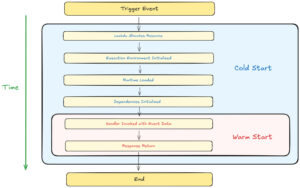Welcome To Chapter 3.0 Of The Web: The Business Model And User Benefits
21/02/2023
869
Table of Contents
Hello everyone! My name is Binh, and I am the CEO of SupremeTech. I am excited to welcome you to the second installment of my blockchain technology blog series. If you haven’t read it yet, be sure to check out my first blog post, Exploring the Opportunities of Blockchain Development.
Today, I want to talk about Web3, a buzzword that you’ve probably heard a lot about lately. While it’s not a finished product yet, Web3 is an ongoing evolution of the internet that we all play a part in building. So, there is no one right answer to what Web3 is, and everyone has their own definition. In this post, I’ll share my perspective on Web3 and why I think it’s important for the future of the internet.
First thing first, what are web 1.0 and 2.0 by the way?

I used to be a web developer when I started my first company. So for me, the easiest definition of this release versioning sound-like evolution is about how to build and how to use it.
Web 1.0, also known as the “read-only web” was the first phase of the internet that emerged in the 1990s. During this phase, the internet was primarily used to display static HTML web pages that were created and controlled by a small number of individuals or organizations. Users could only read or view the content that was presented to them, with no ability to interact or contribute to the content.
Web 2.0, also known as the “read-write web” emerged in the early 2000s and transformed the internet into a more dynamic and interactive platform. Web 2.0 introduced social media, user-generated content, and collaboration tools that allowed users to contribute, share, and interact with online content. This trend was empowered by the emergence of JavaScript web frameworks such as React.js, Angular, and Vue.js. This also gave rise to popular websites and platforms such as Facebook, Twitter, YouTube, Wikipedia, and many others.
So What is Web3?

According to Opensea.io, an emerging NFT marketplace website: Web3 is the name given to the concept of a decentralized internet built on blockchain technology. Web3, in essence, puts control and ownership back in the hands of the people using it. The term Web3 has become shorthand for all of the elements that make up this ecosystem, including cryptocurrency, blockchain technology, decentralized finance (known as “DeFi”), NFTs, the metaverse, and decentralized apps (“dApps”).
It can be challenging to pinpoint the exact differences between Web3 and Web2 since there aren’t any Web3 equivalents to Facebook or Twitter yet. As a user, I believe it’s crucial to keep two main concepts in mind: decentralization and ownership. For instance, my Web3 money will be stored in my personal wallet instead of on a server somewhere. Blockchain technology makes it possible for the internet to keep users’ personal data, including asset data, in a highly secure, decentralized, and independent manner that prevents anyone but the user from modifying their data.
The business model behind Web3 is what makes me think it is crucial for the future

The shift from Web 2.0 to Web 3.0 is not just about technology, it’s also about a new business model that prioritizes the users’ privacy and data ownership. The traditional business model behind Web 2.0 is built around users’ attention and the distribution of ads to fit that attention. This means that big companies provide their users with free services in exchange for their personal data, which is then used to target ads to them. However, as the old saying “no free lunch”, are you still comfortable with trading all of your personal information for free service anymore? In fact, Web 2.0 business model has proven to be problematic, with numerous privacy concerns and data breaches that have occurred in recent years.
In addition, the Web 2.0 business model has also contributed to a decrease in the overall quality of content on the internet, as companies focus more on generating clickbait and sensational headlines to attract users’ attention and generate ad revenue, rather than providing high-quality, informative content. This has led to a proliferation of fake news and misinformation, as well as a general lack of trust in online content.
In contrast to the traditional Web 2.0 business model, the emphasis on user privacy and data ownership in Web 3.0, along with the tokenomic mechanism for value creation, has the potential to incentivize the production of higher-quality content and cultivate a more reliable online environment. By putting users back in control of their personal data and enabling them to profit from their own online activity, Web3 encourages the creation of content that is genuine, transparent, and of actual value to users. This model reduces the incentives for sensationalized or clickbait-style content that is prevalent in the current attention-based advertising model. As a result, Web3 has the potential to lead to a more authentic and trustworthy online environment where users can have greater confidence in the content they encounter.
If you’re interested in learning more about the ideas I discussed in this blog post, I recommend checking out the following resources that I referred to when writing it:
Just like other evolutions of the world, all the exciting features of Web 3.0 will not be clearly defined in one day. It is a gradual process that requires a lot of innovation and works to be done. I myself also, as a leader of a tech company like SupremeTech, I am committed to learning more and building more technology for the more meaningful future of the internet. Please talk to us if you share a similar idea. Thank you!
Related Blog





















